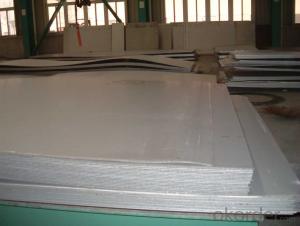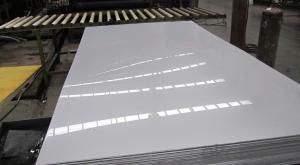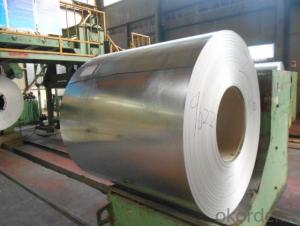Stainless Steel sheet 409L with No.4 Surface Treatment
- Loading Port:
- Shanghai
- Payment Terms:
- TT OR LC
- Min Order Qty:
- 500 m.t.
- Supply Capability:
- 5000000 m.t./month
OKorder Service Pledge
OKorder Financial Service
You Might Also Like
Hot sale stainless steel sheet 201/202/304/304l/310S/309S/316L/316Ti/316/316l/321,410/420/430/444/443/409L, and 904L.
Description of Stainless Steel Sheet:
Description | steel sheet,hot rolled steel sheet,cold rolled steel sheet, steel sheet,sheet,steel plate |
Standard | ASME, ASTM, EN ,BS,GB,DIN, JIS etc |
Application | Steel sheet applies to construction field, ships building industry, petroleum & chemical industries, war and electricity industries, food processing and medical industry, boiler heat exchanger, machinery and hardware fields. |
Packaging | Standard export sea-worthy packing |
Delivery time | 10-30 days |
Quality | No.1 |
Productivity | 500 tons/Day |
Note | Our company has cooperative relation between the domestic agents. Stainless steel sheet can be made accordingto the customers requirements. Fasten delivery. Quality assured. |
Contacts | If you have any question,please feel free contact me. |
Stainless steel sheet surface finish characteristics
Surface finish | Characteristics and application |
2B | The surface brightness and flatness of no2B is better than no2D. then through a special surface treatment to improve its mechanical properties,No2B could nearly satisfy comprehensive uses. |
No.1 | Polished with abrasive belt of grit#100-#200, have better brightness with discontinuous coarse stria, used as inner and external ornaments for building, electrical appliances and kitchen utensils etc. |
No.4 | Polished with abrasive belt of grit #150-#180,have better brightness with discontinuous coarse stria, but thinner than No3, are used as bathtub buildings inner and external ornaments electrical appliances kitchen utensils and food processing equipment etc. |
HL | Polished with abrasive belt of grit #150-#320 on the NO.4 finish and has continuous streaks, mainly used as buildings ornaments elevators, door of building, frontal plate etc. |
BA | Cold rolled, bright annealed and skin-passed, the product have excellent brightness and good reflexivity like mirror, kitchen apparatus, ornament etc. |
8K | The product have excellent brightness and prefer reflexivity can to be the mirror. |
Main Features of stainless steel sheet :
•Escalator, Elevator, Doors
•Furniture
•Production tools, Kitchen appliances, freezers, cold rooms
•Auto Parts
•Machinery and Packaging
•Equipment and Medical devices
•Transport system
Product Details:
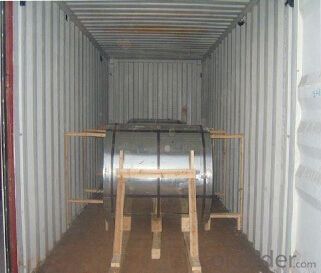
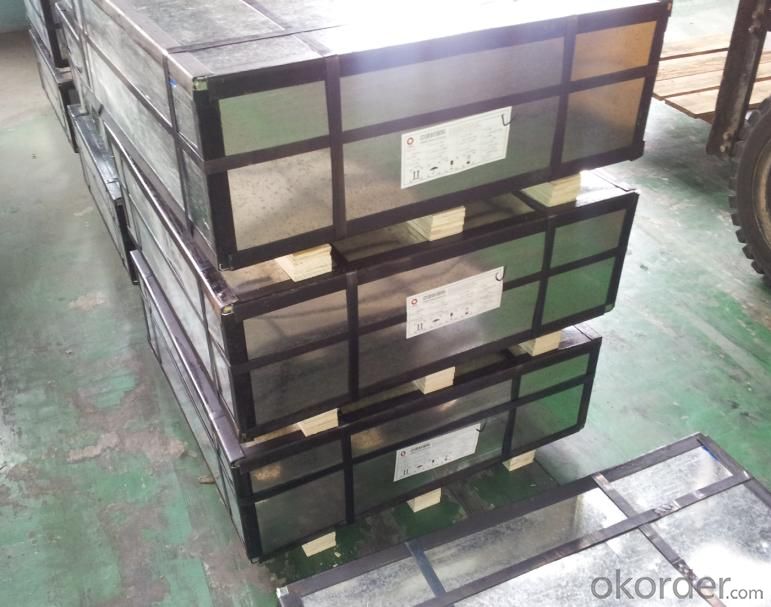
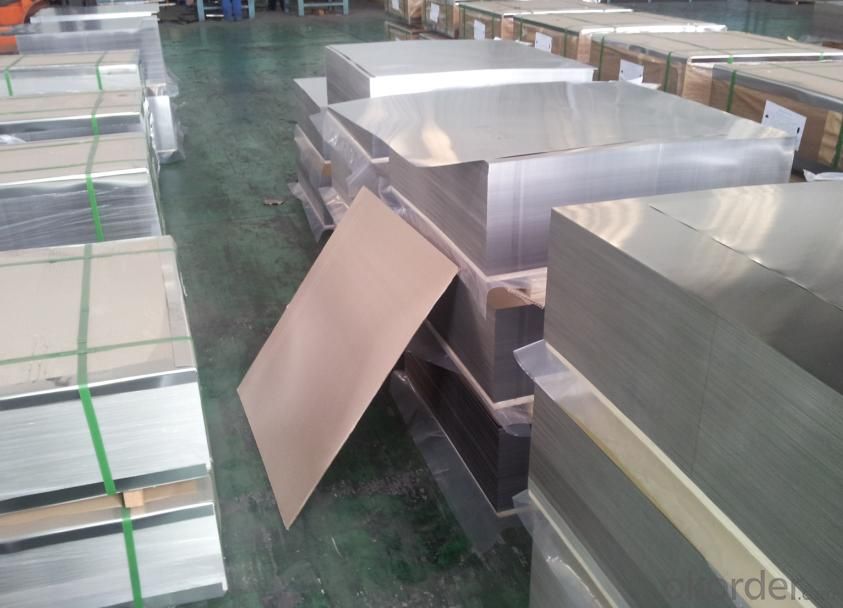
Sandard Seaworth Packing(wooden packing with water proof paper)
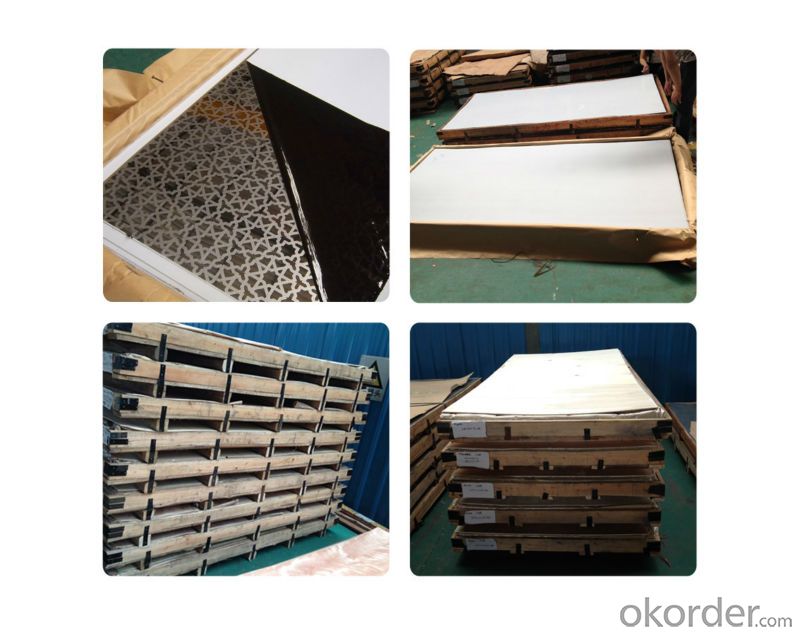
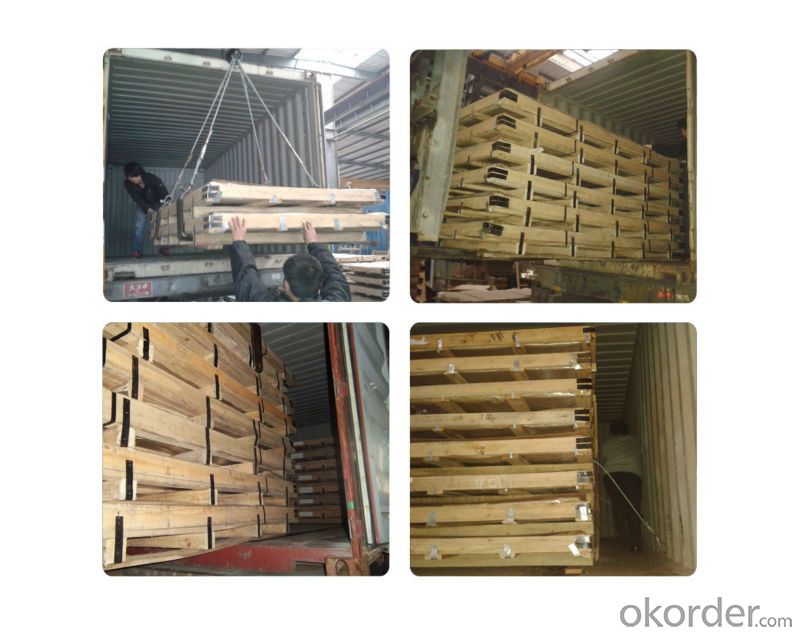
FAQ:
1. What's the quality?
very fine
2. How long get reply?
within 24 hours
If you have any question about stainless steel sheets,donot forget to sending the email to Us! You will get the competitive Price and have a very good experience about the Buying Process! CNBM International Corporation is always your trustful friend!
- Q:What is called anti fingerprint stainless steel sheet?
- Anti fingerprint (also known as non fingerprint) stainless steel plate is a protective layer treatment process is extremely thin and solid formed on the surface of stainless steel by nano coating technology, the stainless steel surface can not only achieve the anti fingerprint effect, but also can improve the ability of anti corrosion; and processing, such as bending or stamping processing can meet the general request.
- Q:What industries commonly use stainless steel sheets?
- Stainless steel sheets are extensively used in various industries due to their exceptional properties and versatility. One industry that commonly utilizes stainless steel sheets is the construction industry. Stainless steel sheets are used for roofing, cladding, and decorative purposes, providing durability, corrosion resistance, and an aesthetically pleasing appearance. Another industry that extensively uses stainless steel sheets is the automotive industry. Stainless steel sheets are used for manufacturing body panels, exhaust systems, and various components due to their high strength, heat resistance, and corrosion resistance properties. Additionally, stainless steel sheets are also used in the production of fuel tanks and other critical components in the transportation sector. The food and beverage industry also heavily relies on stainless steel sheets. These sheets are used for fabricating food processing equipment, storage tanks, and pipelines. Stainless steel sheets are preferred in this industry due to their resistance to corrosion, high cleanliness standards, and the ability to withstand extreme temperatures, ensuring hygienic and safe food processing. The medical and pharmaceutical industries also extensively use stainless steel sheets. These sheets are used for manufacturing surgical instruments, medical devices, and equipment due to their corrosion resistance, biocompatibility, and ease of sterilization. Moreover, the energy sector, including oil and gas, power generation, and renewable energy industries, commonly uses stainless steel sheets. These sheets are utilized for constructing pipelines, storage tanks, and various equipment in these industries due to their resistance to corrosion, high temperature, and pressure. Other industries that commonly use stainless steel sheets include aerospace, marine, chemical processing, and architectural industries. Stainless steel sheets provide the required strength, durability, and resistance to harsh environments in these sectors. Overall, stainless steel sheets find applications in a wide range of industries due to their exceptional properties, making them a preferred choice for various manufacturing and construction needs.
- Q:Can stainless steel sheets be used for chemical storage tanks?
- Chemical storage tanks can indeed utilize stainless steel sheets. With its exceptional resistance to corrosion and rust, stainless steel proves to be an ideal material for safely harboring chemicals, including acids, alkalis, and other corrosive substances. The robustness and endurance of stainless steel guarantee that the tanks can withstand both the pressure and weight exerted by the stored chemicals. Moreover, stainless steel remains non-reactive, preventing any chemical interactions and ensuring the purity and integrity of the stored substances. The smooth surface of stainless steel further facilitates effortless cleaning and maintenance, minimizing the risk of contamination. In summary, stainless steel sheets offer a dependable and fitting choice for chemical storage tanks.
- Q:What is the coefficient of expansion of stainless steel sheets?
- The coefficient of expansion of stainless steel sheets can vary depending on the specific grade or alloy of stainless steel being used. However, in general, stainless steel has a coefficient of expansion ranging from 10.8 to 16.3 x 10^-6 per degree Celsius. This means that for every degree Celsius increase in temperature, stainless steel sheets will expand by approximately 10.8 to 16.3 millionths of their original length. It is important to note that different grades of stainless steel may have slightly different coefficients of expansion, so it is always recommended to consult the manufacturer or specific material specifications for accurate information.
- Q:What is the difference between cold rolled and hot rolled stainless steel sheets?
- The main difference between cold rolled and hot rolled stainless steel sheets lies in the manufacturing process and the resulting surface finish. Cold rolled stainless steel sheets are produced by rolling the steel at room temperature. This process involves passing the steel through a series of rollers to reduce its thickness and achieve the desired shape. Cold rolling results in a smoother and more refined surface finish, with less surface defects and a tighter tolerance on thickness. The cold rolling process also enhances the strength and hardness of the stainless steel sheet. On the other hand, hot rolled stainless steel sheets are manufactured by heating the steel above its recrystallization temperature and then rolling it through a series of rollers. This process is typically carried out at a higher temperature than cold rolling, which results in a rougher surface finish. Hot rolling is generally used for thicker sheets and produces a more variable thickness and hardness compared to cold rolling. In terms of applications, cold rolled stainless steel sheets are commonly used in industries that require precise measurements, such as automotive, aerospace, and construction. The smoother surface finish of cold rolled sheets makes them suitable for applications where aesthetics and surface quality are important. Hot rolled stainless steel sheets, on the other hand, are often used in applications where strength and durability are the primary requirements, such as structural components in buildings, industrial machinery, and equipment. In summary, the main differences between cold rolled and hot rolled stainless steel sheets are the manufacturing process, resulting surface finish, and their respective applications. Cold rolled sheets offer a smoother surface finish and tighter thickness tolerance, while hot rolled sheets have a rougher surface finish and are more suitable for applications requiring strength and durability.
- Q:How do I bend or form stainless steel sheets?
- To achieve the bending or forming of stainless steel sheets, the following steps can be followed: 1. The first step is to select the appropriate stainless steel grade. Stainless steel is available in various grades, each with its own unique properties. It is important to choose the grade that best fits the requirements of your project, considering factors such as corrosion resistance, strength, and formability. 2. The next step involves using the correct tools. Specific tools like a hydraulic press brake or a metal bending machine are necessary for bending stainless steel sheets. These tools apply force evenly, ensuring precise and consistent bends. It is crucial to use tools that are designed for stainless steel in order to avoid damaging the material. 3. Before bending, it is essential to prepare the stainless steel sheet. This includes ensuring that the sheet is clean and free from any dirt or debris. Additionally, marking the desired bending lines on the sheet using a pencil or tape can serve as a guide throughout the process. 4. The bending angle and radius need to be determined based on the specific requirements of the project. This can be done by using a protractor or a template to accurately measure and mark the desired angles. 5. To prevent any movement or slipping during the bending process, it is important to securely clamp the stainless steel sheet to the bending tool or machine. This will ensure stability and accuracy throughout the bending process. 6. The next step involves applying pressure gradually. It is recommended to start the bending process slowly and gradually increase the pressure. This helps prevent the stainless steel sheet from cracking or warping. Close attention should be paid to the bending process to ensure that the desired shape is achieved without any defects or deformation. 7. If there is a need to create multiple bends or complex shapes, the process can be repeated as necessary. Each bend should be carefully measured and aligned with the previous bends to achieve a consistent and accurate result. 8. After bending the stainless steel sheet, any residual marks or burrs can be removed using a file or sandpaper. This will give the finished product a smooth and polished appearance. It is important to keep in mind that bending stainless steel sheets can be challenging, particularly for thicker gauges or harder grades. It is advisable to practice on scrap pieces or seek professional assistance if you are uncertain or lack experience in working with stainless steel.
- Q:Are stainless steel sheets resistant to abrasion?
- Stainless steel sheets, in general, exhibit resistance to abrasion. The notable strength and durability of stainless steel make it less susceptible to scratches and wear in comparison to alternative materials. Its smooth surface can endure friction and abrasion, rendering it suitable across diverse applications that necessitate resistance against scratches and wear. Nonetheless, it is crucial to acknowledge that the degree of resistance may differ depending on the specific grade and finish of the stainless steel employed.
- Q:Are stainless steel sheets available in different colors?
- Typically, stainless steel sheets are solely offered in their natural silver color, not in other hues. Stainless steel is a steel alloy with chromium, which imparts its distinctive silver look. Although it is feasible to apply different coatings or finishes to stainless steel sheets for alternative colors like black or gold, these choices are not commonly provided. Nevertheless, alternatives such as powder coating or painting can be explored to achieve different colors on stainless steel sheets, but these methods might impact the material's ability to resist corrosion and endure over time.
- Q:Can stainless steel sheets be used for elevator mirrors or panels?
- Yes, stainless steel sheets can be used for elevator mirrors or panels. Stainless steel is a versatile material known for its durability, corrosion resistance, and aesthetic appeal. Elevator mirrors or panels made from stainless steel sheets provide a sleek and modern look while ensuring long-lasting performance in high-traffic areas.
- Q:What are the different types of surface treatments for stainless steel sheets?
- There are several types of surface treatments for stainless steel sheets, including brushing, grinding, polishing, and coating. Brushing creates a textured finish, grinding removes imperfections, polishing enhances shine, and coating adds a layer of protection.
1. Manufacturer Overview |
|
|---|---|
| Location | |
| Year Established | |
| Annual Output Value | |
| Main Markets | |
| Company Certifications | |
2. Manufacturer Certificates |
|
|---|---|
| a) Certification Name | |
| Range | |
| Reference | |
| Validity Period | |
3. Manufacturer Capability |
|
|---|---|
| a)Trade Capacity | |
| Nearest Port | |
| Export Percentage | |
| No.of Employees in Trade Department | |
| Language Spoken: | |
| b)Factory Information | |
| Factory Size: | |
| No. of Production Lines | |
| Contract Manufacturing | |
| Product Price Range | |
Send your message to us
Stainless Steel sheet 409L with No.4 Surface Treatment
- Loading Port:
- Shanghai
- Payment Terms:
- TT OR LC
- Min Order Qty:
- 500 m.t.
- Supply Capability:
- 5000000 m.t./month
OKorder Service Pledge
OKorder Financial Service
Similar products
New products
Hot products
Related keywords
